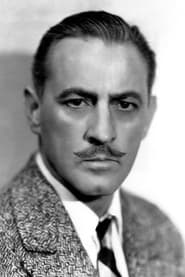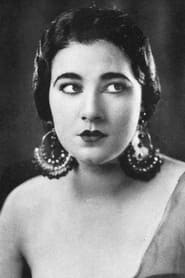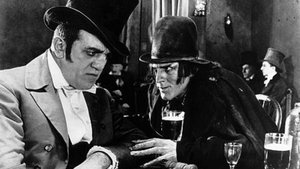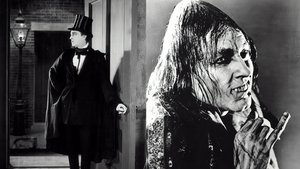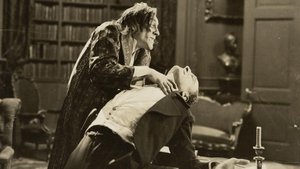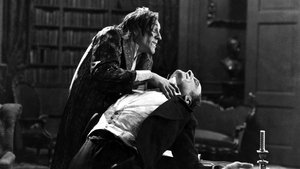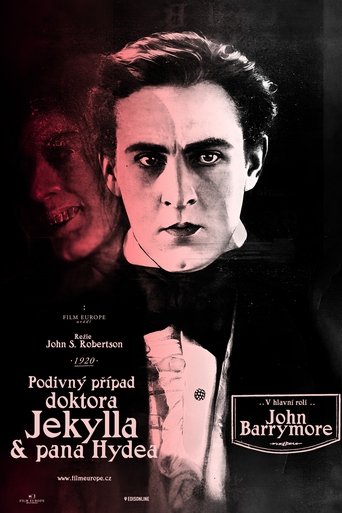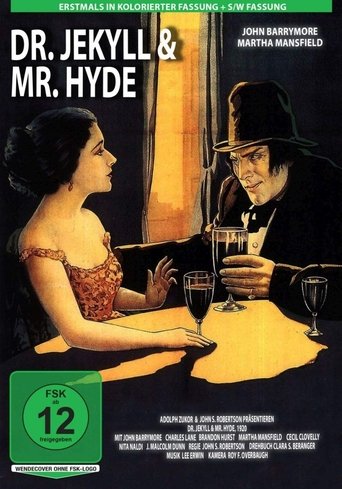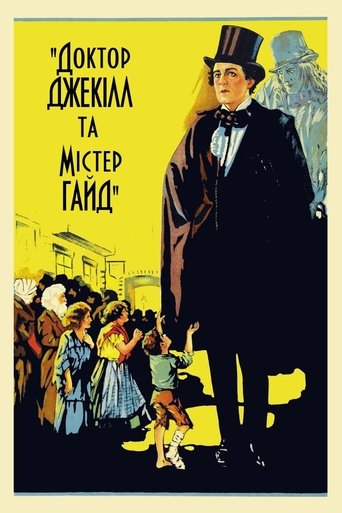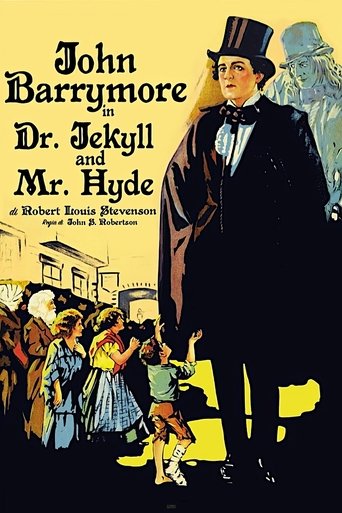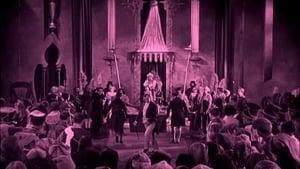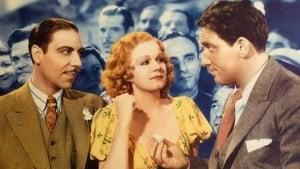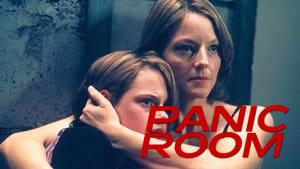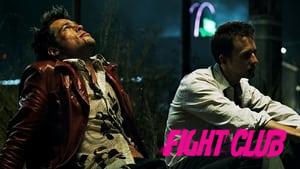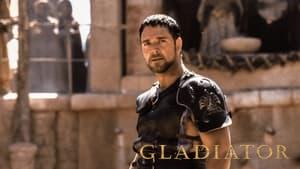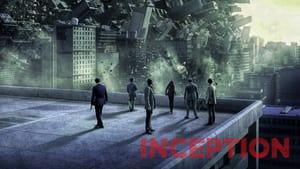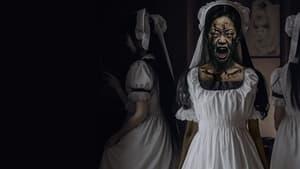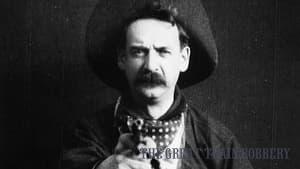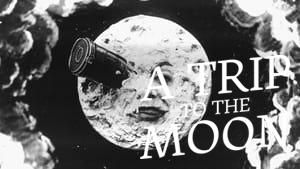
Dr. Jekyll and Mr. Hyde
The world's greatest actor in a tremendous story of man at his best and worst!
1920 | 79m | English
Popularity: 3 (history)
| Director: | John S. Robertson |
|---|---|
| Writer: | Robert Louis Stevenson, Clara Beranger, Oscar Wilde |
| Staring: |
| A doctor's research into the roots of evil turns him into a hideous depraved fiend. | |
| Release Date: | Mar 18, 1920 |
|---|---|
| Director: | John S. Robertson |
| Writer: | Robert Louis Stevenson, Clara Beranger, Oscar Wilde |
| Genres: | Science Fiction, Drama, Horror |
| Keywords | double life, transformation, alter ego, silent film, jekyll and hyde, torment |
| Production Companies | Famous Players-Lasky Corporation |
| Box Office |
Revenue: $0
Budget: $0 |
| Updates |
Updated: Jul 30, 2025 Entered: Apr 13, 2024 |
| Name | Character |
|---|---|
| John Barrymore | Dr. Henry Jekyll / Mr. Edward Hyde |
| Brandon Hurst | Sir George Carewe |
| Martha Mansfield | Millicent Carewe |
| Charles Lane | Dr. Richard Lanyon |
| Cecil Clovelly | Edward Enfield |
| Nita Naldi | Miss Gina |
| Louis Wolheim | Music Hall Proprietor |
| Alma Aiken | Extra (uncredited) |
| J. Malcolm Dunn | John Utterson (uncredited) |
| Ferdinand Gottschalk | Old Man at Table in Music Hall (uncredited) |
| Julia Hurley | Hyde's Landlady with Lamp (uncredited) |
| Jack McHugh | Street Kid - Raises Fist to Mr. Hyde (uncredited) |
| Georgie Drew Mendum | Patron in Music Hall (uncredited) |
| Blanche Ring | Woman at Table with Old Man in Music Hall (uncredited) |
| May Robson | Prostitute at Clinic (uncredited) |
| George Stevens | Jekyll's Butler Poole (uncredited) |
| Edgard Varèse | Policeman (uncredited) |
| Name | Job |
|---|---|
| John S. Robertson | Director |
| Robert Louis Stevenson | Novel |
| Roy F. Overbaugh | Director of Photography |
| Clark Robinson | Art Direction |
| Charles O. Seessel | Set Decoration |
| Thomas Russell Sullivan | Theatre Play |
| Karl Malkames | Negative Cutter |
| Shaw Lovett | Assistant Director |
| Robert M. Haas | Set Designer |
| Clara Beranger | Screenplay, Scenario Writer |
| William Cameron Menzies | Art Direction |
| Oscar Wilde | Novel |
| Name | Title |
|---|---|
| Adolph Zukor | Producer |
| Organization | Category | Person |
|---|
Popularity History
| Year | Month | Avg | Max | Min |
|---|---|---|---|---|
| 2024 | 4 | 12 | 19 | 8 |
| 2024 | 5 | 12 | 19 | 8 |
| 2024 | 6 | 13 | 24 | 6 |
| 2024 | 7 | 15 | 26 | 8 |
| 2024 | 8 | 14 | 24 | 8 |
| 2024 | 9 | 9 | 13 | 5 |
| 2024 | 10 | 12 | 28 | 6 |
| 2024 | 11 | 11 | 30 | 6 |
| 2024 | 12 | 9 | 11 | 6 |
| 2025 | 1 | 9 | 13 | 6 |
| 2025 | 2 | 9 | 15 | 3 |
| 2025 | 3 | 5 | 16 | 1 |
| 2025 | 4 | 2 | 4 | 1 |
| 2025 | 5 | 1 | 4 | 1 |
| 2025 | 6 | 2 | 4 | 1 |
| 2025 | 7 | 1 | 3 | 0 |
| 2025 | 8 | 1 | 3 | 0 |
| 2025 | 9 | 2 | 2 | 1 |
| 2025 | 10 | 2 | 3 | 1 |
| 2025 | 11 | 2 | 4 | 1 |
Trending Position
A very good early silent with both exquisite direction and a fine acting performance by John Barrymore. Well-worth checking out for cinephiles with a heightened interest in the origins of American horror cinema. ...
I'd have to admit that John Barrymore was certainly no oil painting. Unlike so many silent-era film stars, he could actually act, rather then just look longingly into the camera and/or the gal's doey eyes. Here he portrays Robert Louis Stevenson's eponymous characters with quite some menace and skil ... l. The story of the eminently respectable "Jekyll" who is fascinated by the human psyche and who experiments with mind/body altering drugs, discovering his inner and pretty unpleasant id in "Mr Hyde" in the process. There now follows a battle royal between the two personalities, the decent and the monstrous, and it rapidly becomes unsafe for those around him - including "Millicent" (Martha Mansfield), whom "Jekyll" loves, and even music hall girl "Gina" (Nita Naldi), the object of the desires of his alter ego. Barrymore is great, here - though some of his transformation scenes did remind me of a rather crazed Richard III playing an invisible piano. Using some dark and dingy locations, the clever use of shadow and Barrymore's own ability to create a considerable sense of menace, this really does have the hairs on the back of your neck paying attention. The visual effects are effective and John Robertson gives us a good solid, adaptation of an eerie, provocative story that still captures the imagination now, but without the characterisations being compromised or overly relying on CGI and the like to distract us from the on-screen antics. Whilst I wouldn't say it was the best - the 1931 version was a cracker too, it is one of those stories that resonates now, as it did then, and this is a terrific interpretation.
